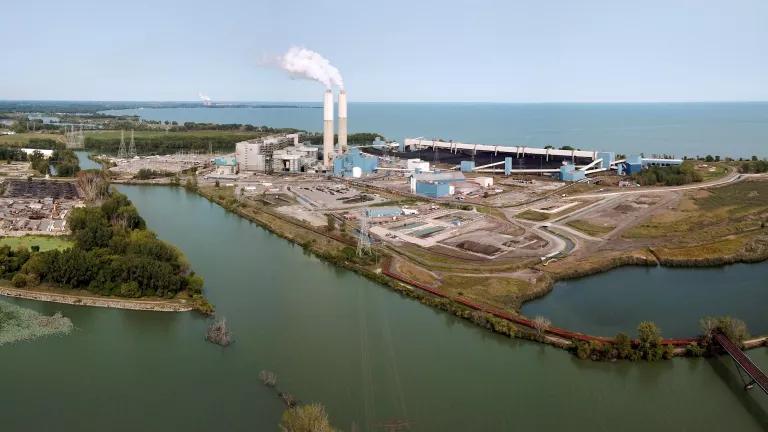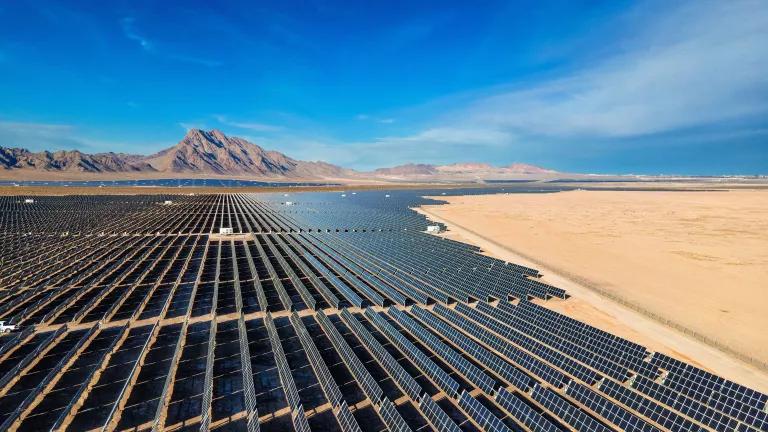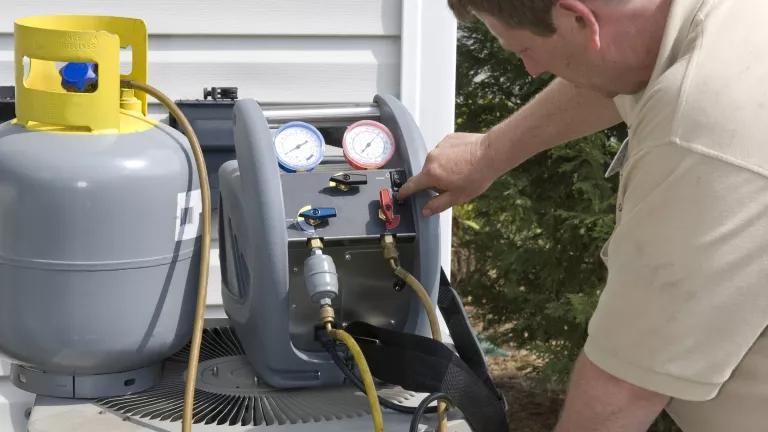Illinois’s REAP Charts a Path to the State’s Clean Energy Future
Planning for a decarbonized future is crucial if Illinois wants to meet its clean energy goals on time.

BlackBox via Unsplash
On May 30, 2024, the Illinois Commerce Commission (ICC) adopted a final Renewable Energy Access Plan (REAP), charting a path toward the state’s clean energy future. The purpose of the REAP is to create an actionable plan to meet the goals of Illinois’s Climate and Equitable Jobs Act (CEJA), providing the necessary scaffolding to ensure that the state can decarbonize its electricity supply mix equitably, affordably and on time. While there is still work to be done, this iteration of the REAP is a significant step forward.
A step toward more holistic state energy planning
Illinois’s transition to a 100 percent clean energy mix is already underway, and it is crucial for the state to plan for greater renewable penetration and fossil retirements on the horizon. Without a plan, Illinois risks unnecessarily retaining fossil generators that are both uneconomic and dangerous to human health. With a plan, Illinois can reliably replace retiring dirty capacity with clean wind, solar, and flexible resources like energy storage.
Fortunately, the REAP kicks off an approach that is well positioned to ensure adequate supply replacement and maintain system reliability. CEJA’s first retirement cliff begins in 2030, and to prepare for this, the REAP tasks ICC staff with monitoring progress against the goals of CEJA annually from 2025 through 2029. This effort supports a joint study required in the law that will be conducted by the Illinois Environmental Protection Agency, Illinois Power Agency, and ICC in 2025 and every five years thereafter; it’s intended to address the state’s reliability needs looking toward the future and identify any potential challenges and near-term solutions. Clearly, 2025 will be a critical planning year for Illinois, and it is imperative that these studies be carried out in a way that is comprehensive, additive, and held to the highest standard.
The REAP also requires several other important studies, including the evaluation of the environmental justice impacts of continuing operation of fossil generation and an economy-wide decarbonization study. Building off of each other, these efforts provide an opportunity to identify and operationalize strategies that support a renewable portfolio standard (RPS) of 50 percent by 2040 and guarantee the elimination of fossil fuel generator emissions by 2045. The results of these studies will illuminate different paths that Illinois can take to ensure that the goals of CEJA are not only reachable but reachable in a timely fashion.
Promoting near-term grid solutions like grid-enhancing technologies
Grid-enhancing technologies (GETs) are important near-term solutions that can improve the efficient operation of Illinois’s grid which are complementary to pursuing longer-term transmission solutions. The REAP highlights the importance of deploying these advanced transmission technologies to ensure that Illinois reaches its RPS targets and decarbonization goals. It also appropriately emphasizes the multiple benefits that GETs offer: from increasing the “capability and value of new transmission projects” to “debottleneck[ing] transmission constraints, reducing congestion costs, and help[ing] integrate renewable resources.”
The REAP ensures that the ICC is responsible for promoting the adoption of GETs by coordinating utility and regional transmission organization (RTO) efforts to incorporate these advanced technologies as solutions in transmission planning processes. The plan sets a precedent for other states to follow suit, balancing the prioritization of cost-effective, near-term solutions like GETs while concurrently pursuing longer lead time solutions.
Encouraging proactive coordination between Illinois and RTOs
Encouraging coordination between Illinois and the state’s RTOs—MISO and PJM—is an important long-term effort to ensure that RTO processes materially support the goals of CEJA. The REAP tasks ICC staff with supporting reforms that will improve both interconnection and transmission planning processes. For example, the REAP requires that the ICC determine a set of REAP Zones, reflecting areas on the Illinois grid that have strong near- and longer-term potential for renewable development. The REAP Zones are intended to be presented to and considered by the RTOs as inputs to inform more proactive transmission expansion.
Interconnection delays are a credible threat to the goals of CEJA. Taking a first step toward better coordination with RTOs is an opportunity for Illinois to actively advocate for regional reforms that will ultimately expedite renewable development in the state. The REAP highlights the important role that states can have in RTO processes, and formalizes Illinois’s responsibility as a leader in this space.
Overall, the REAP re-emphasizes Illinois’s commitment to achieving a clean energy future, charting a path forward and setting an example for the rest of the Midwest. Now it’s time to get to work implementing that plan and turning Illinois’s commitment into reality.


